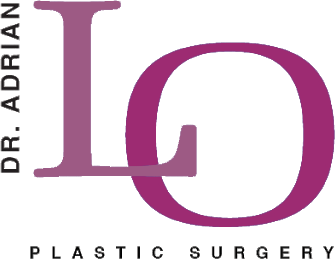
Beauty, self-image, and confidence are intensely personal parts of our life journey. For many women, transaxillary breast augmentation is a transformative procedure. It allows them to achieve the feminine silhouette they’ve always wanted and boost their self-esteem. But what is transaxillary breast augmentation, and how does it differ from other incision methods?
4 Min Read:
What Is Transaxillary Breast Augmentation?
Like any surgery, breast augmentation involves making incisions on the body, which naturally results in scarring. The presence of scars is one of the main concerns breast implant patients have when considering this procedure. Unlike more traditional breast augmentation techniques that create incisions under the breast or around the nipple, transaxillary breast implant surgery is a “scarless” technique.
A transaxillary breast augmentation procedure employs small incisions in the armpits, reducing the appearance of visible scars. The technique is coined as “scarless” because there are no incisions or scars created on the breasts themselves. Dr. Adrian Lo has refined this technique over the course of 20 years, standing out as an expert in the field. If you are looking for breast enhancement with no visible scarring, a transaxillary breast augmentation might be the best option for you.
Where Are Transaxillary Breast Implant Incisions Located?
It’s important to note that being a “scarless” breast augmentation process does not mean the absence of incisions. However, the transaxillary technique guarantees that any scars or marks made will be as discreet as possible. Incisions for transaxillary breast augmentation are made in the armpits. This position makes it easy to conceal the incisions and resultant scars under the normal creases of the armpits.
Since the incision is far from the breast, Dr. Lo uses an endoscope to precisely and accurately place the implants, preventing breast tissue injury and ensuring a faster recovery.
Size of Incision
The transaxillary breast augmentation technique can be used with saline implants or highly cohesive silicone implants, also known as gummy bear implants. Transaxillary breast augmentation incisions are around 1 ½ inches long, but the actual size of the incision depends on the type and size of the implant. For instance, silicone implants might require a slightly larger incision than saline implants.
Transaxillary Incision vs. Inframammary Incision
The major difference between transaxillary and inframammary breast augmentation is the incision location. Unlike a transaxillary breast augmentation incision, an inframammary augmentation requires an incision in the bottom crease of the breast.
This naturally creates scars under the breasts that are easily covered with swimsuit tops and bras. The inframammary incision method is the best choice for patients who want high-volume silicone implants, as this type of implant can be more difficult to place with a transaxillary incision.
Transaxillary Incision vs. Periareolar Incision
A periareolar incision is a breast augmentation incision made around the lower outer edge of the areola. This location allows direct access to the breast tissue for an accurate implant placement. This incision method is also extremely versatile and utilized for other breast procedures like breast lifts and breast reduction surgery.
However, a periareolar incision might present potential problems such as a visible scar or loss of nipple sensitivity. In contrast, a transaxillary incision keeps all surgical work away from the breast tissue.
Benefits of Transaxillary Breast Augmentation
Less Noticeable Scarring
Most cosmetic surgery patients are concerned about the appearance of post-procedure scars. After all, you are looking to improve your appearance! The last thing you want is a constant reminder of the procedure. With transaxillary breast augmentation, the incision is concealed in your armpits and tends to fade out over time and become almost “invisible” with proper scar care.
Quicker Recovery
Placing breast implants through an armpit incision allows for minimal disruption to the breast tissue. This means less bruising and swelling in the post-operative phase. Most patients who choose transaxillary breast augmentation with Dr. Lo report quicker recovery time compared to other incision options.
Reduced Risk of Capsular Contracture
Capsular contracture causes scar tissue around the breast implant to become hard, tight, and painful. It is a common concern that affects about 5% of breast augmentation patients. Fortunately, transaxillary augmentation might have a lower chance of causing this condition compared to other incision methods.
Interested in Transaxillary Breast Augmentation in New Jersey and Philadelphia?
You deserve to look and feel good, comfortable, and confident in your own skin. Dr. Adrian Lo is here to guide and support you every step of the way. Contact us at (215) 829-6900 or complete our contact form to learn more or book a consultation.
